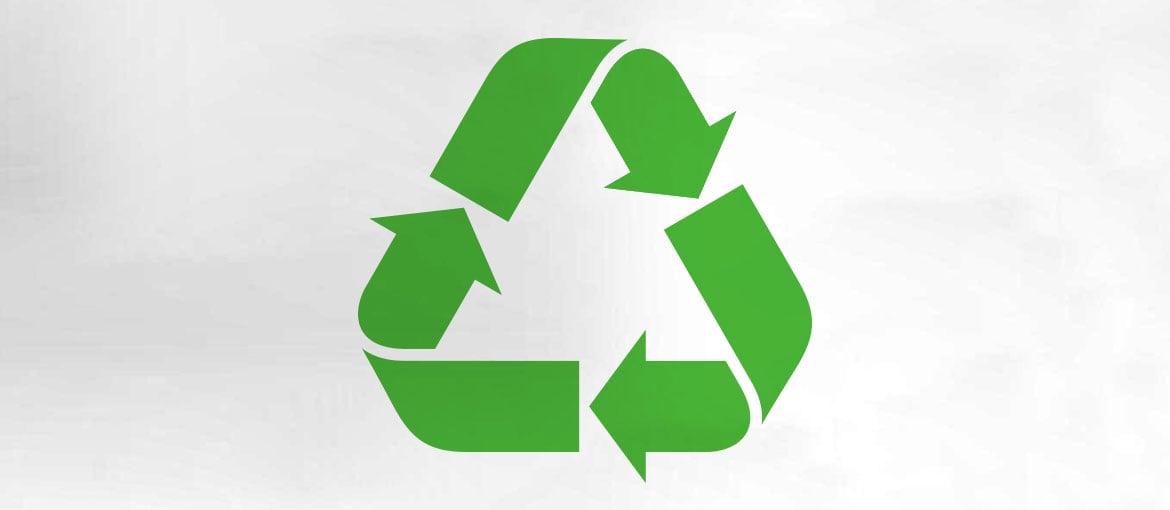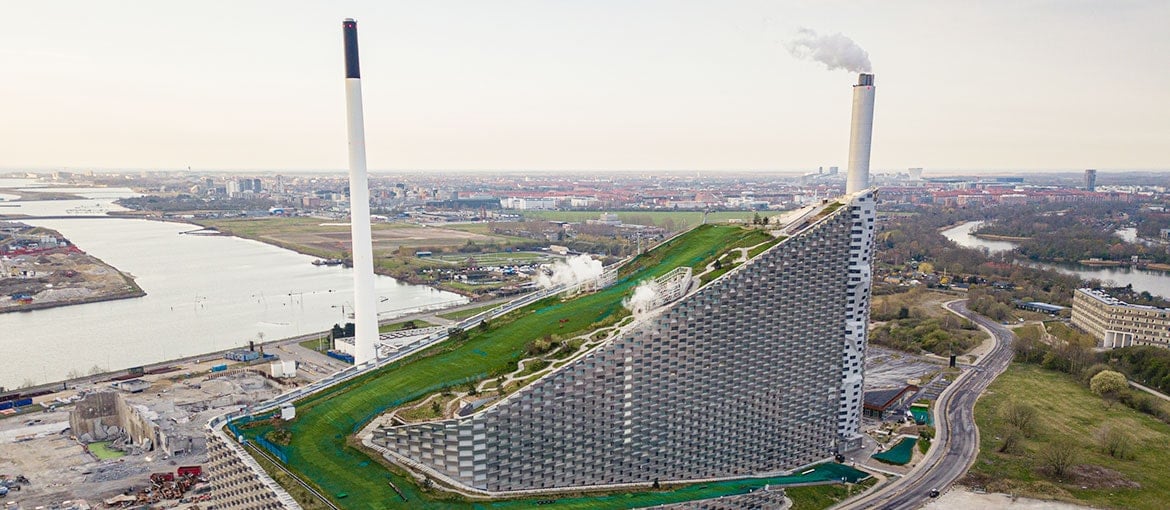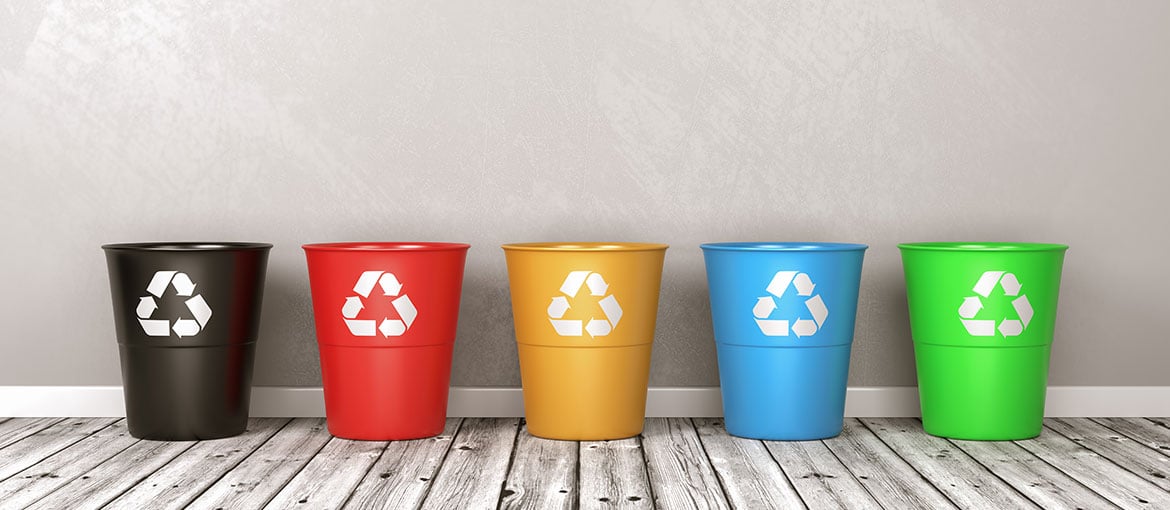Table of Contents
Deep down, most of us know that not everything that could be recycled in our homes and offices ends up in the right bin. And that with just a little more commitment and awareness, we could reduce the amount of rubbish that ends up in landfill…
Today we’ve decided to discuss the topic of recycling: an opportunity to put together some hints and tips on improving your sustainability and to share a few interesting facts about the world of waste. Enjoy!
What is recycling? And how do you do it?
It all begins with us, the public, when we are asked to do an initial sort of our rubbish. We put items that can be recycled into the relevant bins, while everything else goes in general waste. Each type of rubbish is then taken to the relevant disposal or recycling facility:
- general waste goes to landfill or to an incinerator;
- organic matter is composted;
- recyclable materials are sorted and sent to recycling companies, where they are transformed into a raw material that can be used to create new, usable materials.
Which materials can be recycled? It varies depending on where you live, so for more accurate information, you’ll have to contact your local waste disposal centre, or the local council, for an explanation of how recycling works in your area. Generally, organic waste, paper, plastic, glass, metal, batteries, clothes and oil can always be recycled; each has its own designated bin at the recycling centre.
Have you ever stood in front of the recycling bins, unsure where to throw your item? To remove all uncertainty, the Commission Decision of 28 January 1997 introduced some international codes that help you to recognise the material a recyclable product is made from, to avoid the risk of making a mistake!
As you can see on the list of codes, the recycling symbol is a triangle made up of three arrows. It recalls the Möbius strip, which represents infinity, a concept well suited to the principles of the circular economy. The logo in question was designed in 1971 by Gary Anderson in a competition set up by the Container Corporation of America. It is also used to indicate paper recycling and, in a stylised form, shows that you are dealing with a recyclable or recycled material. The number in the centre shows what material it is.

But why is recycling so important? It may seem like a stupid question, but it is always good to refresh your memory of the reasons for doing something.
The importance of recycling and some tips for reducing waste
As time goes on, we are becoming increasingly aware of the urgent need to protect our planet by reducing our impact, both in terms of the resources we use and the pollution we produce.
There are some very important reasons pushing countries to act in the fight against rubbish.
Here are three of them:
- The increasing global population, resulting in increased pressure on our planet’s resources.
- The finite nature of natural resources. It is therefore our duty to protect them by keeping waste to a minimum, and recycling is an excellent way of doing this.
- The impact of unsorted waste on younger generations. It will cause pollution and major environmental damage.
In our own little way, we can do a lot to help the ‘recycling machine’ run smoothly. And that doesn’t just mean putting things in the right bin (although that would be an excellent start!) – we also need to adopt other good habits to cut our waste.
Good habits like:
- Taking a reusable bottle with us when we go shopping.
- Choosing loose rather than packaged products.
- Opting for products made or wrapped with recycled or recyclable materials.
- Replacing disposable items (plastic plates, cups, containers and cutlery) with reusable or biodegradable utensils.
- Installing water dispensers in offices instead of using plastic bottles.
- Opting for glass containers, which are completely recyclable.
- Increasing our use of recycled paper.
Just following this list would help our planet a great deal.
Recycling: some interesting facts from around the world
Every country has its own rules regarding collecting and recycling rubbish, and so we decided to do a mini world tour in search of some recycling trivia. We discovered, for example, that Germany is the best country at recycling in the world: around 56% of its waste is recycled, making it an excellent role model for the rest of us! Here are some more interesting snippets from various parts of the planet.
A town in Japan is on the way to achieving ‘zero waste’ status.
In Japan, each individual is responsible for sorting out their own rubbish. Every container must be washed, cartons must be flattened to take up less space, labels must be removed and the details of the person throwing it away must appear on the waste. This means that it is traceable, so people take responsibility for disposing of it properly. Similar processes have also been introduced in other countries, but we were particularly struck by progress in the small town of Kamikatsu, where waste is divided up into an impressive 34 categories, ensuring that virtually all materials are recycled. The aim is to become a zero-waste town by the end of 2020.
New York and its drinks can treasure hunt
Since 1982, in New York drinks distributors have added a five cent commission to every can sold. If the can is returned empty to the shop, the consumer receives five cents, and the shop owner can in turn return it to the distributor and receive 3.5 cents. This system has led to a real treasure hunt for discarded cans, which, if returned to the waste disposal company, are worth five cents each. Originally designed to incentivise recycling, it now helps keep between 4,000 and 8,000 people afloat.
There is no ‘waste problem’ in Sweden.
Almost everything that cannot be recycled in Sweden is incinerated. However, unlike other countries, Sweden has transformed its ‘waste problem’ into a resource that increases its GDP. The country now has 34 waste-to-energy plants, enough to provide electricity to power 680,000 homes.
In Denmark, an incinerator doubles as a ski slope
We’re referring to Amager Bakke, which opened in Copenhagen in 2017 – a cutting-edge waste-to-power plant that uses advanced technology to generate the maximum possible amount of energy and heat from rubbish. But there’s more: the incinerator was also designed to be a destination for Copenhagen’s residents, with artificial ski slopes and an almost 90-metre climbing wall. Amager Bakke has received accolades for its energy efficiency, waste treatment, environmental awareness, visual appearance and reception from the local community.

There is a road made from recycled plastic in the Netherlands
In 2018, a cycle route connecting the city of Zwolle with the village of Giethoorn was built using nothing but recycled plastic. What could be more sustainable than using recycled materials to create infrastructure that incentivises green transport?
As you can see, recycling is a truly global phenomenon!

